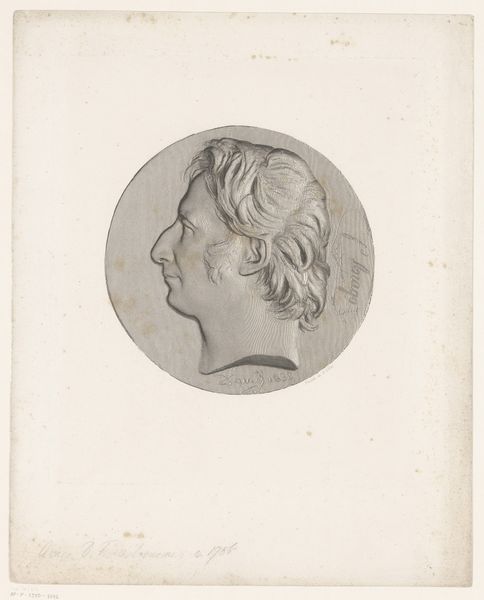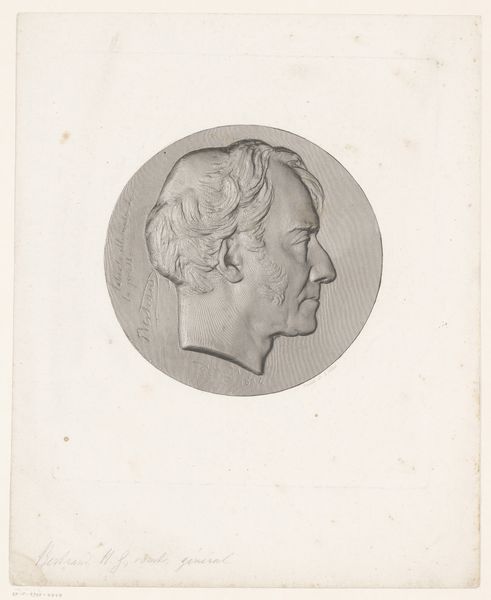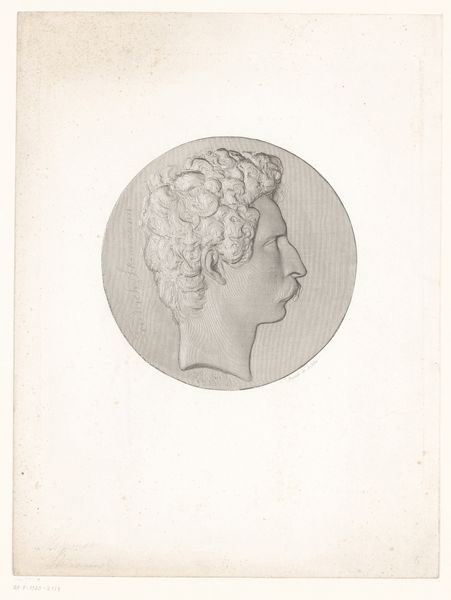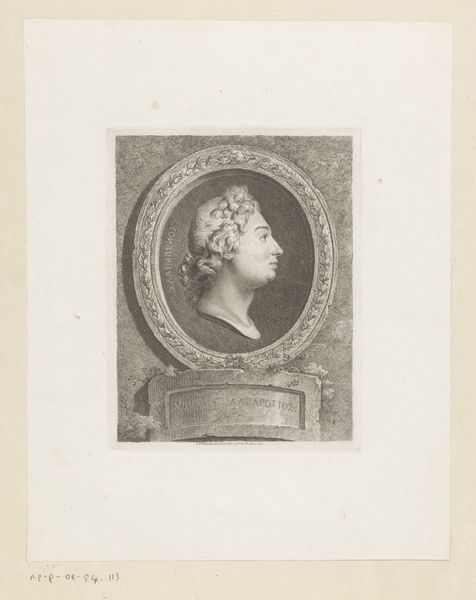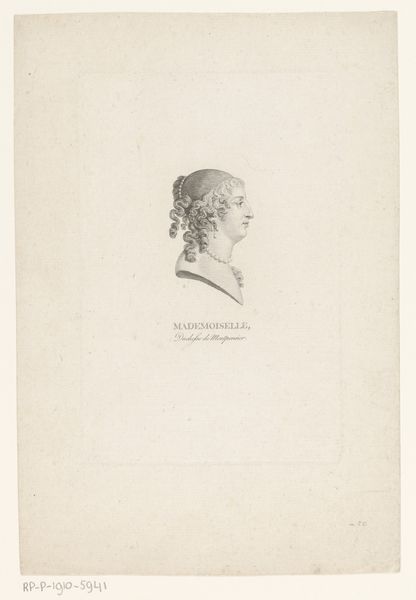
Dimensions: height 180 mm, width 143 mm
Copyright: Rijks Museum: Open Domain
Editor: We're looking at Johann Hegi's engraving, "Portret van Karl Wilhelm Ramler," dating roughly from 1757 to 1799. It’s a small, delicate portrait. What stands out to me is its formal, almost austere quality. How do you interpret this work? Curator: It’s fascinating how a seemingly simple image can carry so much symbolic weight. This profile portrait, rendered in the clean lines of engraving, evokes the tradition of classical portraiture—think Roman emperors on coins. Notice how Ramler is presented: the sharp profile, the neoclassical frame. Editor: Yes, it feels very deliberate, not spontaneous. Curator: Exactly! It signals a conscious connection to a lineage of intellectual authority. In the late 18th century, such imagery was powerful. By aligning Ramler, likely an important intellectual figure of his day, with those historical symbols, the artist is claiming a place for him within a larger narrative of knowledge and power. What emotional feeling is transmitted when viewing? Editor: It gives a sense of permanence and perhaps a little coldness, not really intimate. Curator: And isn’t that revealing? While appearing to be a personal portrait, the imagery works to elevate the sitter to an almost mythic status, embodying Enlightenment ideals. So the coolness perhaps speaks to rationality valued during that era. Editor: I never thought about the connection between rational thought and emotional expression here. Curator: By recognizing these visual symbols and their historical echoes, we gain a much deeper understanding of the work's intention and cultural context. The portrait transforms into something far richer than just an image of a man.
Comments
No comments
Be the first to comment and join the conversation on the ultimate creative platform.

